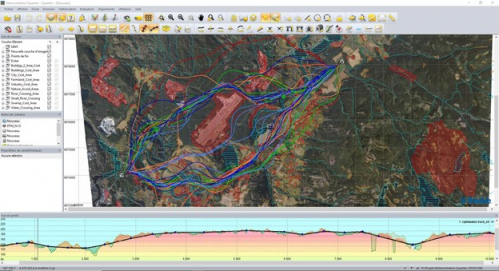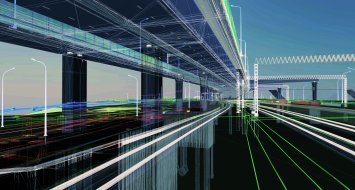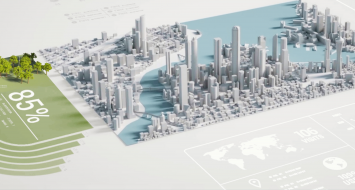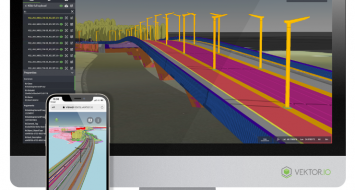Arkance Systems: making the right choices to design and build tomorrow's infrastructure
Advanced technologies such as big data, the cloud, augmented reality, BIM, and analysis and simulation tools help improve project reliability and meet various challenges. According to Arkance, BIM Infrastructure consists of supporting its customers and partners in creating, structuring, sharing and reusing data in a format adapted to their needs. It is about ensuring the digital transformation of a construction project to optimize each stage of its life cycle and thus improve its design, execution and operation.
Capturing the environment
Before taming the data of a project, it must be captured! This involves capturing and modeling the environment: The survey of the natural terrain - through 3D scanners or aerial photogrammetry by drone - allows to create a cloud of points quickly and easily, then to process it, analyze it and create via adapted drawing or design software to create quality deliverables with a faithful modeling of the natural terrain or the existing building in order to implement the project.
Data Management
As the cornerstone of a project, data must be structured and controlled. To do this, it is necessary to select a document management and data analysis solution adapted to the needs of the project and to the workflows of the various participants.
Design and Collaboration
As infrastructure projects are increasingly complex (number of phases, actors and software...), in addition to good data management, the circulation and real-time sharing of this data becomes a major issue. It is then a matter of choosing the most efficient exchange and document management platforms and collaborative tools. Many design tools specialized in infrastructure design exist on the market, published by companies such as Autodesk and Trimble. They allow the generation of plans, measurements and quantities necessary for the execution of the project.
Some use big data and complex algorithms to automatically generate the best routes according to multiple criteria (cost, urban density, types of materials and their sources of supply, carbon footprint) for linear infrastructure projects such as roads or railroads.

Optimizing your BIM strategy for infrastructure therefore has many benefits: improved planning, optimized design, more predictable costs and better understanding between project stakeholders. The result is a minimization of the risk of errors during construction.
To create innovative and efficient infrastructures, you need to choose the right partners - software and infrastructure experts - who can support you and implement a modern BIM methodology, from digital mock-up to construction site 4.0.
Other news

Fully custom data processing pipelines
Build custom tools for processing reality data with Pointscene’s new API

Allplan Bridge 2022: The evolution of precast bridge modelin...
Discover a dedicated modeling solution to generate accurate geometry easily and quickly

BIM Infra, a quality approach according to setec
The benefits of BIM Infrastructure are numerous. For a long time, BIM Infrastructure has r...

Infrakit’s owners’ view: schedule, costs and quality
The work environment for which Infrakit was designed for is quite extensive and diverse. M...


